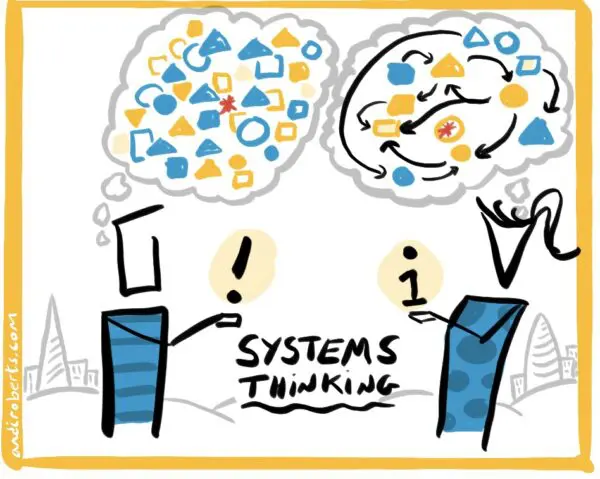What Is Systems Thinking?
It’s not some fancy new tech trend. It’s been around forever. But in my own words: systems thinking is about seeing how the parts affect the whole — and how the whole affects the parts. It’s zooming out and zooming in at the same time. Kind of like trying to read the code and the runtime logs — together.
It’s about loops, delays, patterns. Not just steps. You start to ask:
- What causes what here?
- What might happen after that?
- What’s reinforcing this weird behavior?
- Are there hidden feedback loops I’m ignoring?
It’s like debugging your entire thought process.
The Moment It Hit Me
I was working on a product dashboard — pretty simple UI update. Or so I thought.
We kept optimizing the API calls, making charts load faster, cleaning up the layout. We even shaved off milliseconds from data parsing. But no one was happy. The clients said the dashboard still felt “slow.” Not glitchy — just clunky.
Turns out, the whole system was sending data in awkward intervals, the cache had its own timing logic, and the UX flow encouraged users to click multiple filters in quick succession — all creating a perception of lag.
No checklist would’ve helped. We had to step back and see the system — from user click, to frontend state, to network response, to backend timing logic. Once we mapped it all out, the problem made sense.
We fixed the experience, not just the components.

Lists Are Tempting (But Dangerous)
Don’t get me wrong — lists are satisfying. They give the illusion of control. You feel productive. But they’re often just short-term coping mechanisms. You cross things off, but you rarely ask:
“What happens because I did this?”
That’s where systems thinking kicks your brain into a new gear. You stop being reactive. You start asking what you’re really trying to fix or build.
How I Started Thinking in Systems (Without Realizing It)
Honestly, I didn’t read some smart book and suddenly become a system ninja. It crept in. Here’s how:
1. Drawing Stuff. A Lot.
Whiteboards, sticky notes, Figma — anything that let me visualize connections. Once you draw the pieces and link them, you realize “oh wow, these aren’t isolated.”
2. Asking “What Else Breaks?”
Whenever I made a change, I’d try asking, “what else might this impact?” or “if I were a user, what pattern would I fall into?”
3. Observing Weird Behavior Over Time
If something failed randomly or “only sometimes,” I’d dig for patterns. 9 out of 10 times, it wasn’t a bug — it was a system behaving exactly as designed… just poorly designed.
4. Making Feedback Loops Visible
Systems have loops — like, A affects B, and B loops back to affect A again. Spotting these helped me fix problems at the source. Kind of like realizing a misconfigured retry logic is actually causing network congestion.
Systems Thinking at Work
There was this time we were deploying a microservice architecture for a logistics startup. Everything worked in isolation — beautiful little services that did their job. But the business team kept complaining about delayed deliveries.
Tech team said “not our fault,” but clearly it was.
Long story short — each service had retry-on-failure logic. So when one service slowed down, the next one kept retrying until the queue became a flood. The network got choked. Logs were fine. Health checks were green. But the system was melting.
That was a real wake-up call. We needed dashboards showing the flow, not just service uptime. We needed to see the system in motion, not just its components.
Some Things That Helped Me Shift My Mindset
- Books: Thinking in Systems by Donella Meadows — life-changing, but a bit slow-paced. Worth it though.
- Miro + whiteboard walls: Getting things out of your head is half the battle.
- Asking “why?” like a toddler: Honestly, 3–5 layers of “why?” will usually expose the root problem.
- Slack channels where people vent: You learn more about systems by watching people complain than you might expect. Complaints = signals.
A Little Messy Truth
Even now, I fall back into checklist-mode when I’m stressed. It’s faster, easier. But I try to catch myself. When something feels off, I stop and ask:
“Am I fixing a part, or understanding the whole?”
That little pause changes everything.
Final Thought: Try Mapping One Small System Today
And hey, if you’re feeling overwhelmed, try mapping one small system today. A feature, a user journey, even your morning routine. You’ll be surprised what you notice when you stop looking at tasks and start seeing relationships.
Read our more blogs-How to Learn Complex Ideas Using the Feynman Technique


